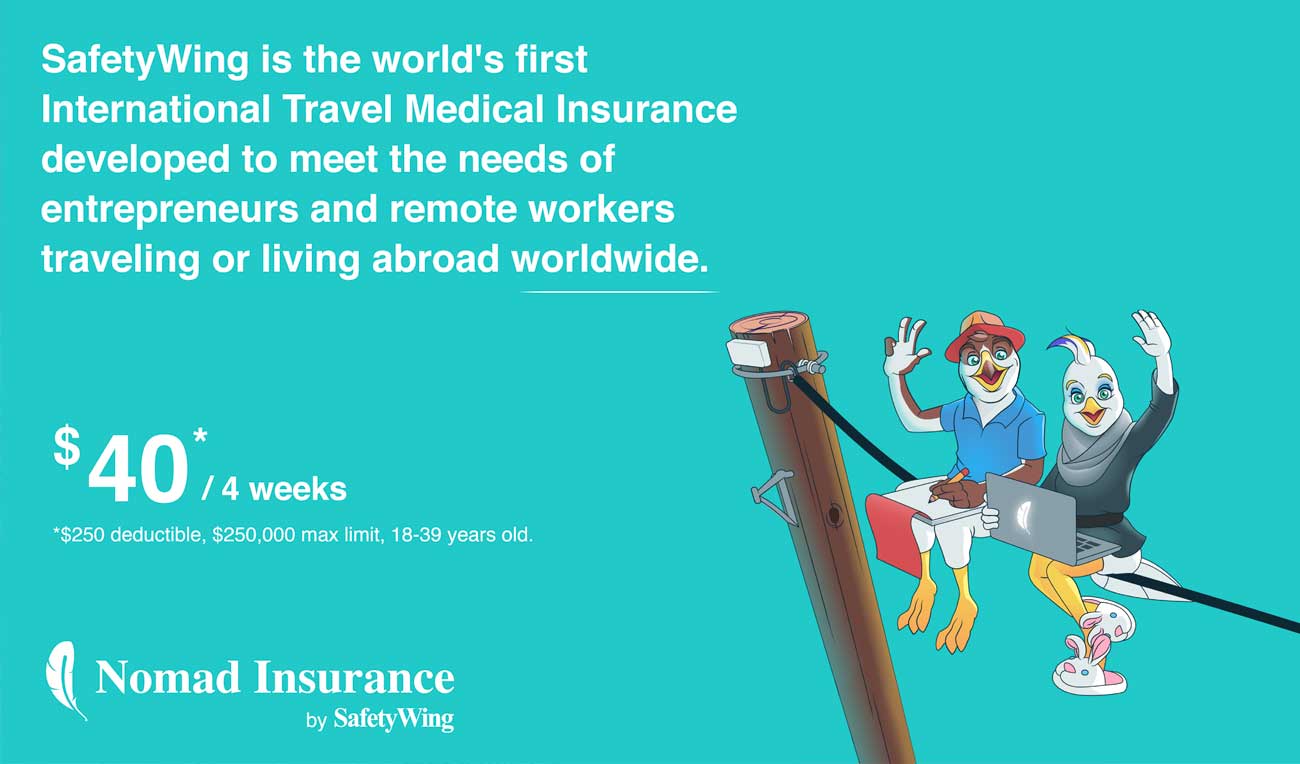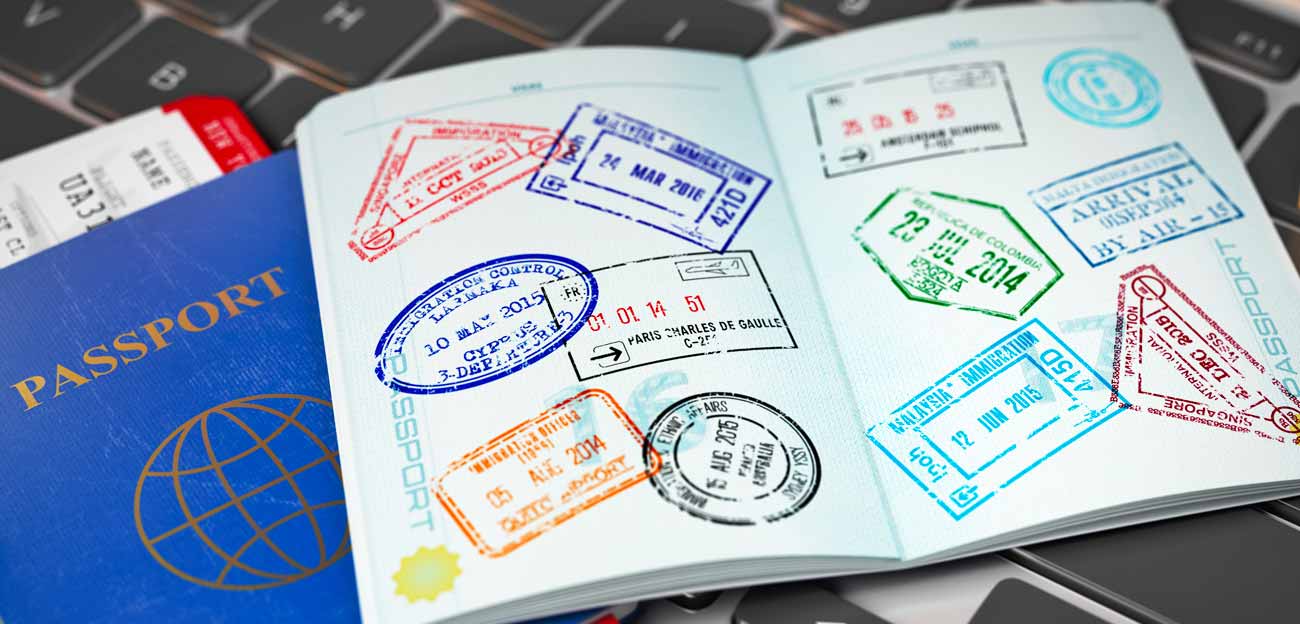“How to stay in Europe longer within the Schengen Countries or Area?”
This is one of the most common questions that I get from readers, especially because I have been able to stay in the Schengen Area for more than the usual 90-day limit despite being an unmarried non-EU (non-European Union) national with a third world country passport.
I understand that a lot of people want to have the right to stay for more than 90 days or 3 months, especially since going on a complete Eurotrip can’t be done in such a short span of time. So with this post on how to stay in Europe longer, I will be giving you different ideas and options on how you can legally extend your European vacation!
NOTE: Europe is a large continent with a number of countries and one of the biggest zones that they have is the Schengen area. For the purpose of this article, I will be focussing on this region to help you make the most of your stay.
Schengen Area
To date, the Schengen Area is a group of 26 countries and it comprises most of Europe. As part of a unified agreement, all of them have agreed to abolish passports and internal border controls.
This means that all the Schengen countries act as if they are only ‘one country’ — so every citizen of each member state is free to go anywhere they want. Meanwhile, outsiders who want to enter the Schengen Area would experience border control once at the first country that they enter; but after that, entering other member countries would no longer require further immigration control.
These 26 countries are namely:
[1] Excluding Greenland and the Faroe islands
[2] Excluding overseas departments and territories
[3] Excluding Aruba, Curaçao, Sint Maarten, and the Caribbean Netherlands
[4] Excluding Svalbard
[5] With special provisions for Ceuta and Melilla
From the above list, 4 of these are non-EU (or EFTA member states that may have border control) — Iceland, Liechtenstein, Norway, and Switzerland — whereas 22 are part of the EU.
However, to date, there are a total of 28 members of the EU; so what happened to the other 4? Well, Bulgaria, Cyprus, Ireland, and Romania — are just NOT part of the Schengen Area.
TRIVIA: There are 3 additional European microstates — Monaco, San Marino, and the Vatican — that can be considered as de facto within the Schengen Countries given how they don’t have border controls with the countries that surround them. However, it’s important to note that they are not official Schengen member states since they have not signed documents for it. (But of course, it’s fine to visit with a Schengen visa).
– – –
Schengen Visa
The Schengen Visa serves as the basic short-term visa that you will need to be able to stay in all of the 26 countries. However, non-Schengen citizens are allowed to enter the area without this said visa (their passport will only get stamped upon arrival and departure) as long as they are residents of:
- Albania[*]
- Andorra
- Antigua & Barbuda
- Argentina
- Australia
- Bahamas
- Barbados
- Bermuda
- Bosnia & Herzegovina[*]
- Brazil
- Brunei
- Bulgaria
- Canada
- Chile
- Colombia
- Costa Rica
- Cyprus
- Dominica
- El Salvador
- Georgia
- Grenada
- Guatemala
- Honduras
- Hong Kong SAR
- Israel
- Japan
- Kiribati
- Macao SAR
- Malaysia
- Marshall Islands
- Mauritius
- Mexico
- Micronesia
- Moldova[*]
- Monaco
- Montenegro[*]
- Nauru
- New Zealand
- Nicaragua
- North Macedonia[*]
- Palau
- Panama
- Paraguay
- Peru
- Romania
- Saint Kitts and Nevis
- Saint Lucia
- Saint Vincent
- Samoa
- San Marino
- Serbia[*]
- Seychelles
- Singapore
- Solomon Islands
- South Korea
- Taiwan[1]
- Timor Leste
- Tonga
- Trinidad & Tobago
- Tuvalu
- Ukraine
- United Arab Emirates
- USA[1]
- Uruguay
- Vanuatu
- Vatican
- Venezuela
[*] Visa waiver applies only to holders of biometric passports
[1] The passport must include an identity number
NOTE: This list is as of 2020. Ireland, UK, and their territories are allowed limitless entry to the Schengen Area.
– – –
If you are NOT a resident of any of the countries above (which mostly comprises citizens of Africa and Asia) you would need to apply at an embassy to obtain a tourist/short-term Schengen Visa.
RELATED ARTICLE:
Alternatively, check out my comprehensive visa guides per country.
NOTE: It helps to mention that there are non-Schengen members in Europe that allow entry to their country if you have a Schengen Visa, namely: Albania, Belarus, Bosnia and Herzegovina, Bulgaria, Cyprus, North Macedonia, Monaco, Montenegro, Romania, San Marino, Serbia, Turkey, and the Vatican City.
HOWEVER, you must check these details beforehand since their rules might have changed. Plus, customarily, only multiple-entry Schengen visas are allowed. For starters, you can check this list for a list of countries you can visit with a Schengen visa.
– – –
The 90-Day Limit
Once you are allowed to enter the Schengen Area — with just your passport or with a short-term visa — you are ONLY permitted to stay for 3 months (90 days) in ANY 6-month period (180 days). The 90-day span doesn’t need to be consecutive, it’s treated as cumulative (especially if you have a multiple-entry visa); but the fact remains that after you have stayed in Schengen for a total of 90 days, you have to leave. You are NOT allowed to come back again until the 181st day from the first time you stepped in.
IMPORTANT UPDATE (March 2015): As of 18 October 2013, the Schengen member states changed the calculation of the 180-day period. To know more about this and avoid fines, deportations, and bans in Schengen, please check this article.
If you don’t leave by the time you hit 90 days, you are subject to a fine or deportation — worst-case scenario, you will be banned from the Schengen Area for a period of time (1-3 years) or indefinitely. It is sometimes considered as ‘okay‘ if you stay for a couple more days and even up to a week, but I advise that you don’t try and push your luck especially if you’re on a visa. And if you stay longer than a week, you should know that you’re going to be in big trouble.
Nevertheless, it’s said by most travelers (who are free to enter Schengen countries with just a passport) that southern countries like Greece, France, Spain, and Italy are not so strict on checks. While western countries like Belgium, Germany, Netherlands, and EFTA states (Iceland, Liechtenstein, Norway, Switzerland) are very firm with entry and exits (primarily at the airports or train stations, more so if you’re going to an isolated island).
Still and the same, as I’ve mentioned, you shouldn’t ‘push it‘. Follow the rules and if you really want to know how to stay in Europe longer than the 90-day limit, below are the different ways you can stay longer, legally!
FAQ (Frequently Asked Questions)
Unfortunately, the Schengen area policy states that if you have more than one passport and none of them is from a Schengen state, the same rule applies: you still need to do the 90-day stay limit within any 180-day period. So technically, the rule is per person, not per passport; hence, it’s not possible to use two separate passports to stay in Europe’s Schengen zone for long.
Any non-EU national who stays in the Schengen area for more than 90 days (without the appropriate visa such as a long stay or residence one) will usually result in a fine, deportation, and/or re-entry ban to the Schengen area.
Yes, as long as you have a visa that allows it (e.g. a double-entry or multiple-entry visa). However, take note that you must calculate your days of stay so as to ensure that you don’t stay for more than 90 days in ANY 180-day period (see here for more info).
It helps to remember that the 180-day period keeps “rolling” — as such, for every entry that you make into a Schengen country, you need to count backward the last 180 days and see if you have been present in the Schengen area for more than 90 days throughout that time. For more info on this (as well as access a more streamlined day calculator), see here.
Yes, it’s possible! According to the recent Schengen visa code, you can get a 1-year multiple-entry tourist visa if you have obtained and used three (3) Schengen tourist visas in the past. You can get a 2-year multiple-entry tourist visa if you have obtained and used a 1-year multiple-entry visa in the past 2 years. Lastly, you can get a 5-year multiple-entry tourist visa if you have obtained and used a 2-year multiple-entry visa in the past 3 years.
DISCLAIMER: I am NOT an embassy officer nor a migration agent. I am only here to provide you with ideas on how you can stay in Schengen countries longer. If you ever need any help with visas or procedures, please check these visa guides or the related links I have provided in this article (as well as contact the appropriate departments). It also helps to note that I do not guarantee the timeliness of the information below, so please make it your responsibility to recheck the facts since there could be more recent updates/changes. Thank you!
» Get a Europe Student Visa
Student visas in all Schengen countries are not hard to obtain as long as you are accepted, enrolled, or invited by a university or school — which, of course, you should apply for before entering a Schengen country. Naturally, you would have to pay for these courses but you can always work part-time while studying since most student visa-holders are allowed to do so. Otherwise, you could try to get a scholarship, apply to an exchange program (if you’re still studying), or simply enroll in FREE universities.
Yes, you read that right… free!
There are actually several countries in Europe that chose to eradicate tuition fees for both local and international would-be students and they are listed below (along with other countries that have the cheapest tuition). So if you’re looking for ways on how to stay in Europe longer, below are your top options!
Finland
Lowest yearly tuition fee possible: FREE
Regardless of nationality, tuition fees in Finland are absolutely free at whatever level! (Plans of putting tuition fees on non-EU students for 2016 have been totally abandoned). But as per any student application abroad, you would need to prove that you can handle your own living expenses.
Proof of ‘means of support’ per month: At least $630+ (Php 27,800+)
For more information: See ‘Studying in Finland‘
.
Norway
Lowest yearly tuition fee possible: FREE
No matter your nationality — local or international — state universities and university colleges in Norway do NOT charge tuition fees, and much like Finland, it applies to all levels: undergraduate, masters and Ph.D. (Some specialized courses might still have fees, though small, so always recheck with the university. Private institutions, on the other hand, would still have fees.)
Proof of ‘means of support’ per month: At least $1,000+ (Php 44,200+)
For more information: See ‘Studying in Norway‘
.
Austria
Lowest yearly tuition fee possible: FREE or starts at $400 (Php 18,200+)
If you’re from a 3rd world country, some universities in Austria will exempt you from paying any tuition, whereas any other non-EU resident will most likely just pay around $400 (at the lowest possible).
Proof of ‘means of support’ per month: At least $900+ (Php 40,000+)
For more information: See ‘Studying in Austria‘
.
Germany
Lowest yearly tuition fee possible: FREE or $1,000 (Php 44,200+)
As of 2014, all public German universities offer higher education free of charge not only to local but international students! However, it’s important to note that this is true for the undergraduate level only and that there might still be some administration fees (but the cost would start at about $57 or Php 2,500+). Just make sure to check that the course you’re applying for is in English; however, if you’re fluent in German, that’s better.
Proof of ‘means of support’ per month: At least $770 (Php 34,000+)
For more information: See ‘Cost of Studying in Germany‘, ‘List of Free German Universities‘ and ‘Studying in Germany‘
.
Hungary
Lowest yearly tuition fee possible: $1,000+ (Php 44,200+)
The good thing about Hungary is that, unlike the Scandinavian countries, it is one of the European countries that has a more affordable cost of living, thus, proving your ‘solvency’ would be easier than the others.
Proof of ‘means of support’ per month: At least $566+ (Php 25,000+)
For more information: See ‘Studying in Hungary‘
.
France
Lowest yearly tuition fee possible: $1,000+ (Php 44,200+)
You’re lucky if you can find a cheap university in Paris because the cheapest ones are actually found outside of the capital (Lyon is one example). I have actually been told that there are public universities that can only cost $300 a year but since I wasn’t provided with the exact university names, I leave it up to you to do the research.
Proof of ‘means of support’ per month: At least $500+ (Php 22,000+)
For more information: See ‘Studying in France‘
.
Belgium
Lowest yearly tuition fee possible: $1,100+ (Php 50,000+)
I have tried this option before through the University of Antwerp for one of their 1-year Master Programs, and the process of obtaining a student visa was fairly easy given how I was backed up by the university that had accepted my application. The tuition was worth $2,000+ (Php 88,500+) which is almost double the lowest yearly tuition possible; so if you want to get the cheapest, try the University of Leuven, Hasselt University, or the University of Ghent (I didn’t manage to apply for these three since I was late for their deadlines, that’s why I resorted to saving up $2K to pursue the University of Antwerp).
Proof of ‘means of support’ per month: At least $730 (Php 32,300+)
For more information: See ‘Studying in Belgium‘
.
Italy
Lowest yearly tuition fee possible: $1,500+ (Php 66,400+)
Italy is known for providing studies on fashion, history, and liberal arts at an affordable cost for international students. Living expenses should be easy to handle once you know the economical places to eat and stay in.
Proof of ‘means of support’ per month: At least $390 (Php 17,200+)
For more information: See ‘Studying in Italy‘
.
» READ: How to Save Money for Travel
Should undergraduate or master programs remain to be too costly for you, if not the shorter courses that span for a year or below, consider the language programs since these studies are often cheaper! (Italy is one example of this, as well as Spain).
TIP: For ‘means of support’, it’s always best to add more to the minimum requirement. It also helps to add a sponsor (even if it’s just on paper) even if you already can support yourself — this is what I’ve done when I applied for a university in Belgium, after all, it’s always best to ‘overdeliver’.
Moreover, if you’re from the Philippines or Asia like me, before you can study overseas for a business or graduate school, check if you need to have a GMAT or GRE certification since most Asian universities are not ‘recognized’ abroad. (GRE is said to be the easiest, which I have done. Others reviewed for months on this, but I only reviewed for a day since I was in a rush; and yet I was fine! But surely, I don’t advise that you do the same).
Also, if your studies were not conducted in English, a majority of the European schools would need a TOEFL or IELTS from you.
– – –
» Find Work or Stay as a Freelancer
There are different ways to do ‘work’, some are conventional but some are unique. Check out the list below to see what best fits you in order to know how to stay in Europe longer!
Apply for Normal Work
This is where you go through the usual process of finding a company (in the form of a transfer, internship, part-time, or full-time work) and then apply for a work visa.
» For more information: See EuroJobs or Europa
.
Teach English Abroad
This is not the same as those ‘jobs on the road’ where you hold private English classes for people who don’t have it as a first language. Why? Because doing so is a risk. A short-term tourist Schengen Visa is NOT a work permit. Sure, working can still be done in secret (with Spain & Italy as the most tolerant) but if you somehow attract the attention of authorities, it can get nasty. So if you really want to teach legally, secure a work visa or working holiday visa first (that will make you stay longer too) by searching for opportunities in recognized schools or institutions. Teaching English while under a student visa is possible as well. Countries that are typically open to English-teaching jobs are the Czech Republic, France, Hungary, Germany, Spain, and Italy. For these jobs, a TEFL certificate is a usual requirement.
» For more information: See TEFL or ESLCafe
.
Join a Language Assistant Program
Often run by governments, it gives non-EU citizens a chance to stay in the Schengen countries or area longer in exchange for offering aid in teaching the English language — they even pay you for the service you’re doing. There are only a few European countries that offer this kind of program and below are their basic requirements:
- France: must come from one of their 60 partner countries, age 20-30, have a basic level of French, completed at least 2 years of university (https://www.ciep.fr/en)
- Italy: must be a resident of the USA, have Italian proficiency, a university graduate or undergraduate, 3.25 GPA (https://www.indire.it/en/progetto/language-assistants/)
- Spain: must be a resident of USA, Canada, New Zealand, Australia, China, or EU, have a basic level of Spanish, a university graduate, or in their last year of university (https://www.educacionyfp.gob.es/)
- Switzerland: must be a resident of USA, Canada, Great Britain, Ireland, Austria, France, Italy, or Spain, age 21-30, have sound language knowledge of the region (can be German/French/Italian), a university student or graduate (source)
- For openings in other countries, check here.
.
.
Be an Au Pair
Usually done for at least 6 months or more, working as an au pair is like being a domestic assistant as you live with a host family that provides free accommodation and food. Other than providing childcare, you are also typically asked to do light housework as you receive a salary for it.
» For more information: See IAPA, Great Au Pair, or Europa Au Pair
.
Do a Working Holiday
If you are 25 to 31 and a citizen of Australia, Canada, and New Zealand, you are eligible to get a working holiday visa that grants you the right to stay, work, or find work in the Schengen Area for one to two years.
» For more information: See Work Holiday Visas for how to stay in Europe longer
.
Apply for a Freelancer/Digital Nomad/Self-Employment Visa
With the rise of remote workers or digital nomads — as well as the rise of countries’ need for more tourism especially after the COVID pandemic — a lot of destinations have started to implement new visa programs for online or remote freelancers as well as self-employed individuals.
To date, below are examples of countries that implement a digital nomad visa for foreigners:
- Estonia: Digital Nomad Visa
- Germany: Residence Permit for Self-Employment
- Iceland: Long Term Visa
- …and more!
To see a complete list of countries that offer visas for remote workers, read below:
Looking for a Long-Term Travel Insurance?
Providing great coverage and flexibility without costing a fortune, SafetyWing is currently the preferred travel insurance of digital nomads!
.
Be a Volunteer
Much like English-teaching jobs, there are volunteer jobs as well that are ‘under-the-table’ — but apart from being risky, it’s not a legal way for how to stay in Europe longer. Examples are fruit-picking jobs, hostel work, etc. (this is why most of the time their websites advise that you don’t mention to immigration officers that you are going to work on a farm, for example). Therefore, to be able to remain or to be able to become a volunteer for a longer period of time, you would have to either get a work visa/permit or sign up for accredited volunteer programs that could whip out a work visa for you. These often come with a fee, but some can be very affordable.
» For more information: See Europa or Voluntary Service for how to stay in Europe longer
.
Do a Cultural Homestay
This is not like the informal homestay set-ups that I have discussed in this article: [click]. Instead, this is a more formal arrangement between a non-profit organization and a foreign country wherein they partner with wannabe travelers like you and send you to a host family elsewhere. For instance, the organization Cultural Homestay International has a ‘World Explorers’ program wherein in exchange for your 3-months worth of accommodation abroad, all you have to do is share your native language with your hosts for 15 hours per week. (These casual English conversation lessons usually run 5 days a week, 3 hours a day). If you want to travel for a year, it’s possible for them to combine multiple programs in different destinations to make it all sum up to 12 months!
» For more information: See (CHI) World Explorers Program for how to stay in Europe longer
– – –
» Do a Union or Reunion in Europe
The items below are common solutions on how to stay in Europe longer. They have no ‘special’ tricks or tips but they remain to be conventional ways of obtaining a longer visa in the Schengen Area:
Family reunion
Applicable if you have close kinship ties to a Schengen citizen or permanent resident.
.
Marriage or Fiance Visa
Self-explanatory. If you have fallen in love with a European from any of the Schengen countries this is the way to go!
.
Cohabitation
If you’re not the ‘marrying’ type, you can choose to go for a live-in visa with your boyfriend/girlfriend who is a resident/citizen of one of the Schengen countries. Customarily, applications like this become successful if you can prove that you’re in a relationship for at least 2 years or have lived together for at least 1 year. Belgium, for example, has a great cohabitation visa program because you can apply for it while in the country.
.
Home Stays
There are some European families that are willing to take a foreigner in as a part of their household for a long period of time. This can usually be a part of a student’s schooling experience or as a part of an organization for cultural or language immersion (like #8 of the previous section) who would often need a fee from you.
– – –
» Apply for Citizenship
This (citizenship) is more of an option for those who are really focused on staying in the Schengen Area indefinitely. Obtaining this can be done through different ways:
Through Marriage
…with a European in the Schengen Area. On average, it takes 3 years; some can only take a year.
.
Through Purchase or Investments
If you got the money, you can obtain EU citizenship through investments or the purchase of property (or even the purchase of citizenship). Examples of these countries are Austria, Hungary, Lithuania, Malta, and Slovakia. Take note that the price to pay can start at $320,000+ to millions. There are also Schengen member states like the Netherlands and France that offer residency permits for a limited period of time, in exchange for payments or investments at a minimum of $300,000+.
.
Through Ancestry or Naturalization
I call this the ‘Waiting Game‘. If you are able to obtain a long-term visa that will enable you to stay in a Schengen member state for 5 to 10 years, then your citizenship is ostensibly secured. On the other hand, if you can inspect your family tree and discover that you have ancestors who are citizens or have become residents in EU countries in the past, your years of ‘waiting‘ can be shortened! Examples of these are:
- Ireland: This is NOT a Schengen member state, but since Irish citizens are allowed to enter Europe without limits, acquiring citizenship through Ireland would be a good step and you can achieve this if you have an Irish parent or grandparent. Your citizenship immediately becomes effective upon registration.
- Germany: The country freely provides citizenship to children and grandchildren of former Germans who were deprived of their citizenship status between January 30, 1933, and May 8, 1945, on racial, political, or ethnic grounds.
- Italy: Once proven that you have Italian ancestors, you can become a citizen by naturalization if you find a way to remain in the country for at least 3 years (it seems long but better than the norm of 10 years).
- ★ Spain: Like Italy, 10 years is also the usual length required to become a Spanish citizen; but, it can be shortened to 2 years if your country is a former colony of Spain: these are Latin American countries, Sephardic origins, Andorra, Equatorial Guinea, Portugal, and the Philippines. But take note that you must be a natural-born citizen in these countries and aside from the 2-year required to stay for naturalization, processing your application can possibly take 2 more years.
Source: Spanish Naturalization for how to stay in Europe longer
.
*As with most cases of naturalization, countries would commonly require that you have basic knowledge of their language, history, and geography before fully processing your citizenship. Also, you must stay there legally; for example, staying for 2 years in Spain without legal papers does not qualify you for naturalization.
UPDATE: Try to look into Portugal as well. Any individual who has lived in Portugal as a legal resident for a minimum of five years (by studying, working, self-employment, marriage, or reunification) can apply for citizenship, provided that they can demonstrate sufficient knowledge of the Portuguese language and have active ties to the national community.
– – –
» Hold a Long-Term Tourist Visa
A big part of the Schengen Area’s member states do NOT allow long-term tourist visas, except for a few which could grant you a Type D visa (maximum 1 year) with the condition that you will NOT work. These countries are:
France
As long as you have a solid reason and you have enough money for the duration of your stay (said to be a minimum of $3,000 per month or Php 132,000), you can be granted a long-term visitor visa that can last for a year (but can be subject to a renewal depending on your reason for wanting to stay longer, your financial means to prove that you’re not going to need to work, etc.) Take note that this type of visa would allow you to take residency in France ONLY starting from the 4th month of your stay (you can still tour the rest of the Schengen countries from the 1st to 3rd months). Anyhow, in a sense, you can still travel around after the 4th month because there are no border checks on land; but again, that’s a huge risk and it’s illegal. If you get caught, well… you know what could happen.
» For more information: See France Consulate or ask your local French embassy for more details on how to stay in Europe longer
.
Sweden
If you have special grounds or reasons, Sweden is willing to give out a long-stay tourist visa or an extension for 3 more months (you can apply for it while in Sweden or before entry to Sweden). It’s said that most of the people who are successful with this are those who have family or relatives in Sweden, but it’s still worth a try if you’re willing to go through the processing time.
» For more information: See Swedish Migration or consult your local Swedish embassy for more details on how to stay in Europe longer
.
Spain
There is a type of tourist residence visa in Spain called “non-lucrative” and it is geared towards retired or rich persons who can stay for 1 year in the country. This is as long as they can provide proof that they don’t need to acquire work in Spain, that they are not carrying out any economic activity in Spain, and/or that their clients are not based in Spain — so basically, that the person generates their income outside of Spain. One important proof they need is for you to show that you have a monthly income of at least 2,130 EUR.
» For more information: See Spain Embassy or consult your local Swedish embassy for more details on how to stay in Europe longer
.
NOTE: In case you’re wondering, you can check here about Spain tourist visa requirements and tips.
.
RELATED READ: Countries That Offer Long Term and Digital Nomad Visas
– – –
» In & Out Hop
I have listed out the 26 member states of the Schengen Area at the top of this article — keep these in mind very well, and once you do, plan a EuroTrip that will make you hop in and out of these Schengen countries while managing to technically still remain within the European territory. After all, this is one of the best ways on how to stay in Europe longer!
What do I mean by this? Well, you can tour around different Schengen member states like France, Spain, or Germany and by the time you hit your 90-day limit, go and hop over to a non-Schengen European country like Georgia, UK, North Macedonia, or Turkey to wait until you hit the 181st day so that you can come back to the Schengen Area again.
Just find the right mix for this, save up, plan it well, and you can definitely manage to stay for a very long time in Europe. This also works best especially if you can get a multiple-entry Schengen visa for at least a year or more so that you can go in and out of the Schengen zone as many times as you want!
RELATED READ: Schengen Short Stay Calculator
How to get proof of onward travel?
Immigration in any country would often require “proof of onward travel” or basically, proof of a return ticket back to your home country or to any other destination aside from the country you’re entering to. If you don’t have concrete plans yet AND if you want to be flexible with your travels, booking a final flight ticket is extremely costly — thankfully, presenting a “flight reservation” usually already works. To get this, I recommend purchasing it from OneWayFly for a small fee of only $16~!
As I mentioned, this in-and-out hop setup works best for those who:
- Hold a passport that grants visa-free entry to non-Schengen countries
- Hold a visa OR visas that allow visa-free entry to non-Schengen countries
- Hold a double-entry or multiple-entry Schengen visa
RELATED READ:
Countries You Can Visit Visa-FREE with a UK Visa
Countries You Can Visit Visa-FREE with a US Visa
Countries You Can Visit Visa-FREE with a Canada Visa
Countries You Can Visit Visa-FREE with a Schengen Visa
To give you a personal example, I was able to stay for about a year in Europe by jumping from one Schengen country (e.g. France, Italy, Netherlands, Germany, etc.) to a non-Schengen country (e.g. Georgia, Armenia, Serbia, North Macedonia etc.).
Overall, if you want to use this method of ‘hopping’ around, just please remember to:
- Be informed. Take note of the non-Schengen countries’ policies with regard to the number of days that you are allowed to stay in their domain (this is in connection with your passport/visa/nationality).
- Do your own research. Be updated. Take note of any sudden changes to the Schengen member states’ list.
Some people asked me if it’s possible to just apply for 2 or more Schengen visas in one appointment (for later use) in order to stay longer in Europe without going back to their home country to apply for a new one — unfortunately, this is NOT allowed. After all, a succeeding Schengen visa application will render your previous one null or void.
There have been a few people though who were able to apply for a new Schengen visa abroad but this can only be done if the individual can properly justify why they are unable to do a new application in their home country. I know of some travelers who have used the reason of “I’m traveling long term” and have ended up as successful in their appeal. However, it’s still important for you to know that it’s customarily a tough case; but then again… there’s no harm in trying, right?
– – –
» Schengen Visa Extensions
This is a delicate subject because almost all Schengen countries do NOT tolerate extensions once you get into the area with a short-term (less than 90 days) tourist visa. Be that as it may, the good news is that it’s still and always possible if you’re resourceful and creative enough. (Extensions for long-term visas for studies, work, etc. are a different matter altogether).
If you’re rather one of the nationals who are allowed to come into Schengen countries with just a passport, be mindful that it can prove to be more difficult because you technically don’t have a visa on hand to apply for an extension for — sure, there are chances that you can apply and obtain a visa without a need to go back to your home country; however, as I’ve mentioned previously, I seldom hear of situations that are successful in doing this. (You can try and do your research since some embassies might be able to accommodate such requests depending on your nationality and situation).
Now the typical grounds that can grant you an easy extension can be cases of:
- Force Majeure – unforeseen circumstances that are not under your control (i.e. bad weather conditions, airline strikes, etc.); this is the only situation that does not require fees for extension
- Humanitarian reasons – if you have fallen ill or a close family member has fallen ill or died
- Serious personal reasons – individual cases
.
These can allow you to stay for more days either in the whole of the Schengen Area (very rare case) or just inside the country that you are in (that you chose, that is your point of entry or the place you’ve stayed the longest — it’s a case by case basis but this is what mostly happens when you are granted an extension: you’re only allowed to stay in the country that you applied for).
But of course, you wouldn’t want to fall ill nor would you want a family member to die just so you can extend your visa, right? So what other options do you have?
Luckily, there seem to be some Schengen countries that are quite lenient with extensions, and the ones that I know of are:
- PORTUGAL
They can offer up to two extensions, for as long as you can support yourself and provide the necessary documents. (It’s said to be best done in Lisbon).
» For more information: See Immigration or ask the embassy about how to stay in Europe longer
. - SWEDEN
I’ve heard a lot of successful stories from friends who have managed to extend their visa in Sweden, but it’s important to note that most of them were able to do so because they had a Swedish friend, family, or ‘special someone’ to back them up. I guess it’s a way of ensuring a Migration Board that you have a local who can support you (even if it’s just on paper).
» For more information: See Migrationsverket or ask the embassy on how to stay in Europe longer
.
Note: Some people say that short-stay tourist visas can also be extended in France; however, I couldn’t find any reliable source online for this with regard on how to stay in Europe longer; still and the same, it’s worth looking into – let me know if this is indeed possible.
.
» Other Possibilities due to Bilateral Agreements with…
US Citizens
I have read in forums online saying that U.S. citizens can stay for 90 days in Poland, leave for one day, and come back to have another 90-day stay. This is said to be one of the best ways how to stay in Europe longer because of some sort of bilateral agreement or declaration between the U.S. and Poland. I’ve certainly read of accounts that said that they were successful in doing so and have had Polish officials confirming this set-up. However, I advise that you check with them yourself since I can’t find a reliable online source. Make it a point to verify if this is true since it goes beyond the Schengen rules; it’s even possible that the extension will only allow you to stay in Poland only and not in the rest of Schengen.
.
UPDATE: According to the Dutch American Friendship Treaty and Dutch Japanese Trade Treaty, American and Japanese entrepreneurs or self-employed citizens can apply for a Dutch residence permit to live and work in the Netherlands. It’s pretty straightforward if you plan to build a business or are already doing business in Netherlands, but if you’re a freelancer, you need to have one or more commissions in the Netherlands to carry out.
Australian Citizens
Australia has bilateral agreements with Denmark and Germany that override the Schengen conditions allowing Australians to stay up to 3 months or 90 days in each of these two countries. In theory, Australians can stay indefinitely by going back and forth between Germany and Denmark every 90 days. Of course, the restriction of no more than 90 days in any 180-day period in the Schengen area will come into play if they venture out to other member states.
The example scenario for this will usually go like this: on the 90th day of your stay, you have to leave the Schengen zone (you could go to the UK for example). Upon leaving, you have to make sure that you have the stamps from the border police in your passport to be able to prove that you have left the Schengen Area. Afterward, you are allowed to go back to Germany for 90 more days — but only to Germany and you can stay for a total of 180 days there, but no more than that.
SOURCE: Visa exemptions for Australians
.
I have not done extensive research on ALL non-EU nationalities, so I hope you take the action to recheck your rights in the Schengen Area since your home country might have these same bilateral agreements that will allow you to stay longer in Europe.
Now, if I may add, I have also discovered several ‘success extension stories’ in other Schengen countries using the methods below which are both worth a shot. But again, be aware that some countries may accept this while some others may not:
- Register as legal partners – if you have a significant other who is a national of one of the Schengen countries, it’s possible to come into the country with a tourist visa and then immediately jumpstart a live-in or cohabitation agreement (NOT marriage) to be able to remain in the country longer even after the expiry of your tourist visa. Customarily, applications like this only become successful if you can prove that you’re in a relationship for at least 2 years or have lived together for at least 1 year. (Countries that I know of who can take on these kinds of applications are Belgium and the Netherlands.)
- Partner with an NGO or Tourism Board – if you can find an NGO, tourism board, or organization that can vouch for you, it’s possible to gain an easy extension. Some travel bloggers have been able to use this method as they offer their skills of writing or blog ‘reach’ to the appropriate institutions. This is definitely worth your while, especially if a certain migration office is open to other types of visa applications (i.e. I’ve read an account of someone that’s able to do this in Romania; even if it’s not part of the Schengen Area yet, some legit member states can conceivably acknowledge this circumstance).
• • •
Booking Essentials
TIP: It’s a good idea to crosscheck the prices with other popular travel insurance providers like World Nomads and HeyMondo (as my reader, you get 5% off)!
.
However, take note that a travel insurance’s affordability typically means lesser coverage; so please always ensure that you read the fine print in order to decipher which travel insurance company is the right fit for you and your trip!
Looking for more travel tips for Europe?
Check out my other detailed Europe travel guides!
• • •
Overall
I hope this guide on how to stay in Europe longer helped shed some light on the 90-day limit rule in the Schengen countries; plus, I certainly hope that in one way or another, I helped give you an idea of how you can prolong your European journey without breaking the law!
Should you ever have any other tips in mind that should be included in this ‘How to Stay in Europe Longer‘ guide, please feel free to leave a comment below. And if there are any corrections, do kindly let me know of that too!
Before I end this post, I leave you with the following general reminders:
- Do your own research. I cannot stress this enough. Take my advice on how to stay in Europe longer with a grain of salt. Besides, the information that I post here is based on my own findings and experiences, so it’s your responsibility to ensure that the facts that I have here are still up-to-date or true at the time that you are reading this article. I say this because I certainly don’t want you to waste your money or time when you suddenly find out that certain conditions are changed, eradicated, etc.
- Check migration rules. Be well-informed of the rules that apply to you depending on your nationality or passport. Know your limits and your benefits. Speaking of a passport, always ensure that it is NOT expiring anytime soon.
Ultimately, I hope that this whole article on how to stay in Europe longer can also be a way for you to connect to others who have had successful experiences of staying longer in the Schengen Area; therefore, do feel free to post your questions in the comments section below. However, as I said, be reminded that I am NOT an embassy officer nor a migration agent. Any queries relating to such things should be directed to your local embassy or migration board, and NOT to me. Thank you and good luck!















Thank you for your guidance. As someone with a “weak” passport, it’s so hard to find this info. Most of it is told from the perspective of people with “strong” passports.
Hi I have nz passport and uk passport, can I do 3 months on each please.
Thanks
Hey David! Unfortunately, the Schengen area policy states that if you have more than one passport and none of them is from a Schengen state, the same rule applies: you still need to do the 90 days stay limit within the 180-days period. So technically, the rule is per person, not per passport .Hope that helps!
Very thankful to you x
Hello, is it possible to technically “stay 6 months in Europe” by staying 3 months in a non-Schengen EU country, followed by 3 months in Schengen?
Of course! :) As you have seen in the article, I mainly focused on Europe’s Schengen Area 90-day rule, but indeed, like in my “In & Out Hop” section above, you can stay for much longer than 3 months if you go to a non-Schengen country and then back. Hope that helps!
I’ve been looking for hours for information like this! Thank you so much for taking the time to research this and write it out so clearly. I am very impressed by this blog post. Truly the most helpful one I’ve come across.
I’m very happy to hear this!